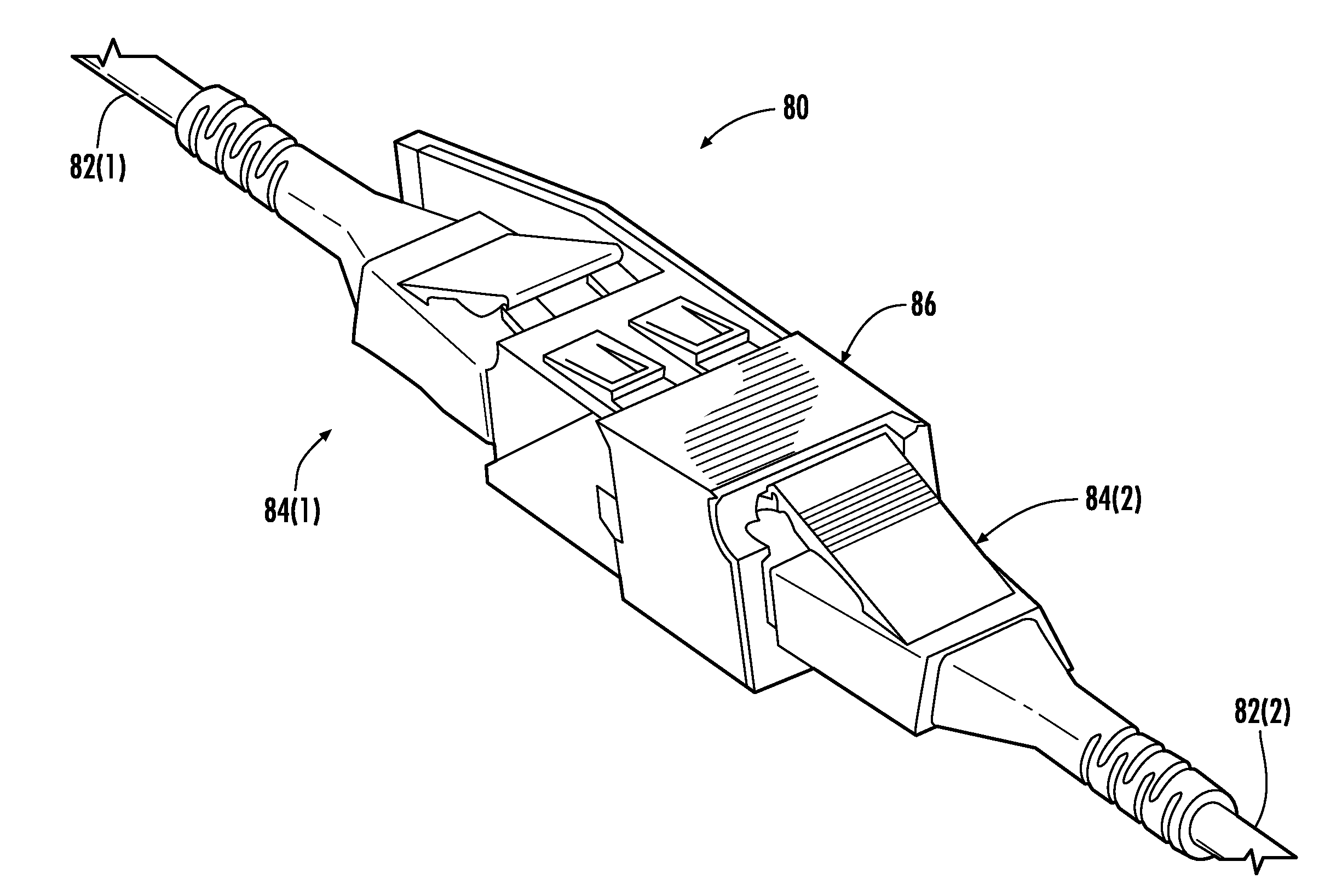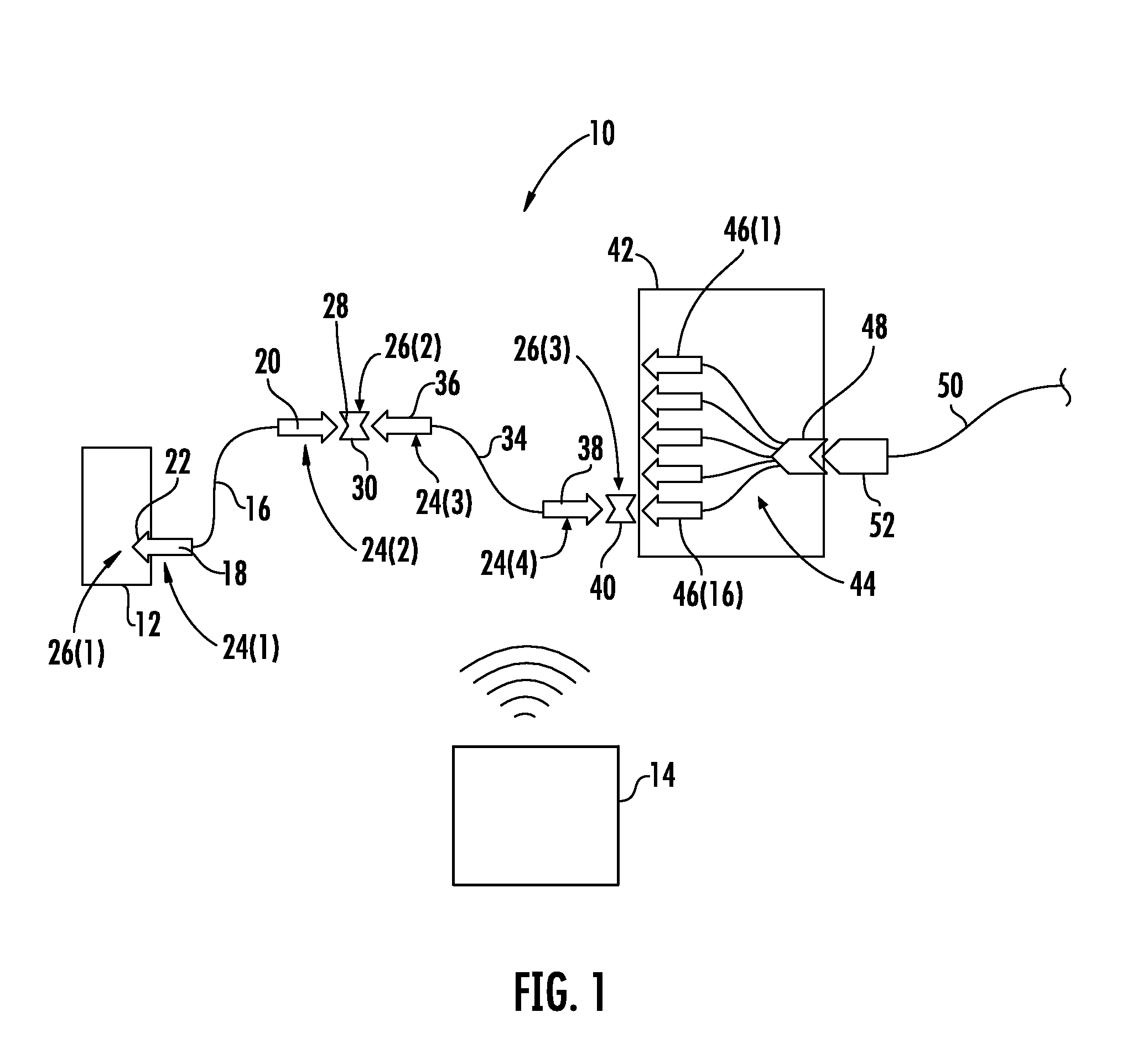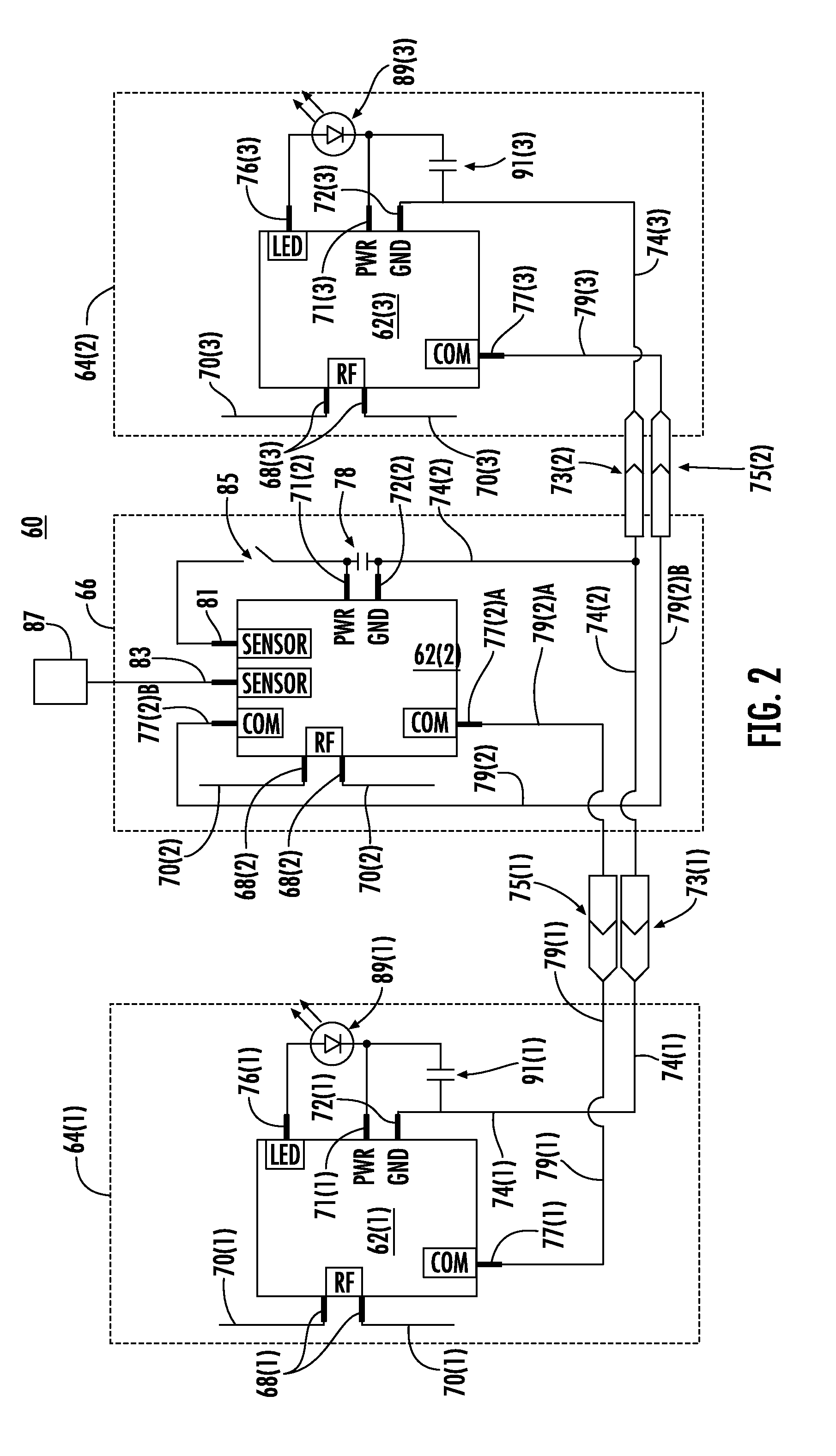Radio frequency identification (RFID) in communication connections, including fiber optic components
a technology of fiber optic components and radio frequency identification, which is applied in the direction of burglar alarm mechanical actuation, burglar alarm by hand-portable articles removal, instruments, etc., can solve the problems of large number of cables and connections that are still difficult or inaccurate, and the identification of proper plugs and sockets (into which the plugs are mated) for setting up and maintaining the system accordingly becomes more complex, so as to reduce or eliminate overlap, facilitate inserting or removing fiber optic components, and enhance reception
- Summary
- Abstract
- Description
- Claims
- Application Information
AI Technical Summary
Benefits of technology
Problems solved by technology
Method used
Image
Examples
Embodiment Construction
[0012]Embodiments disclosed in the detailed description include communication components that are radio frequency identification (RFID)-equipped to wirelessly communicate information regarding the communication component. This information may include an identification of the communication component. In certain embodiments disclosed herein, the communication components are fiber optic components. A transponder or other RFID circuit (also referred to as “RFID tag”) is provided in the fiber optic component for communicating wirelessly to an RFID reader or other transceiver. In this manner, the fiber optic component can be interrogated by an RFID reader that receives information concerning the fiber optic component to assist in mapping or other tracking of the fiber optic component and its connection to another fiber optic component. Detection of the physical connection of components can be accomplished via the electrical connection of circuits located on each component. In order that t...
PUM
 Login to View More
Login to View More Abstract
Description
Claims
Application Information
 Login to View More
Login to View More - R&D
- Intellectual Property
- Life Sciences
- Materials
- Tech Scout
- Unparalleled Data Quality
- Higher Quality Content
- 60% Fewer Hallucinations
Browse by: Latest US Patents, China's latest patents, Technical Efficacy Thesaurus, Application Domain, Technology Topic, Popular Technical Reports.
© 2025 PatSnap. All rights reserved.Legal|Privacy policy|Modern Slavery Act Transparency Statement|Sitemap|About US| Contact US: help@patsnap.com



